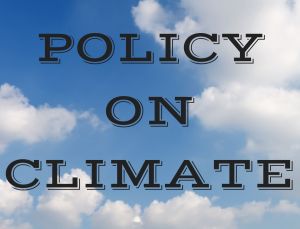H/T Climate Change Dispatch
An obvious clue in this report is the mention of the jetstream, which is not known to be related to minor trace gases in the atmosphere, despite wishful thinking in some quarters. Why do leaders ignore these failures of climate science, yet listen avidly to misguided doomsayers demanding vast spending and taxes?
– – –
National Oceanic and Atmospheric Administration reported the month of May was the second wettest and temperatures were in the bottom-third for its 125-year US history, reports American Thinker.
The 2010 publication titled, ‘A Global Overview Of Drought and Heat-Induced Tree Mortality Reveals Emerging Climate Change Risks for Forests’, was accepted by the Obama administration as scientific evidence that climate change had made the Earth:
“…increasingly vulnerable to higher background tree mortality rates and die-off in response to future warming and drought, even in environments that are not normally considered water-limited.”
But NOAA just reported that May US precipitation totaled an average of 4.41 inches, 1.50 inches above average, and ranked second wettest in the 125-year period of record for May as well as second wettest for all months since January 1895.
The only wetter month in US history was May 2015 with 4.44 inches of precipitation.











 One reason behind this facetious fantasy has resulted from massively funded “renewable energy” industry subsidy-seeking propaganda campaigns.
One reason behind this facetious fantasy has resulted from massively funded “renewable energy” industry subsidy-seeking propaganda campaigns.


 By Craig Rucker ~
By Craig Rucker ~ The new law also authorizes numerous state agencies to issue regulations to achieve greenhouse gas emission limits that govern nearly every aspect of the private economy, including energy, health, housing, transportation, agriculture, economic development, and utilities. And, the new climate law also must be considered when agencies issue any permits, contracts, licenses “and other administrative approvals and decisions.”
The new law also authorizes numerous state agencies to issue regulations to achieve greenhouse gas emission limits that govern nearly every aspect of the private economy, including energy, health, housing, transportation, agriculture, economic development, and utilities. And, the new climate law also must be considered when agencies issue any permits, contracts, licenses “and other administrative approvals and decisions.”








